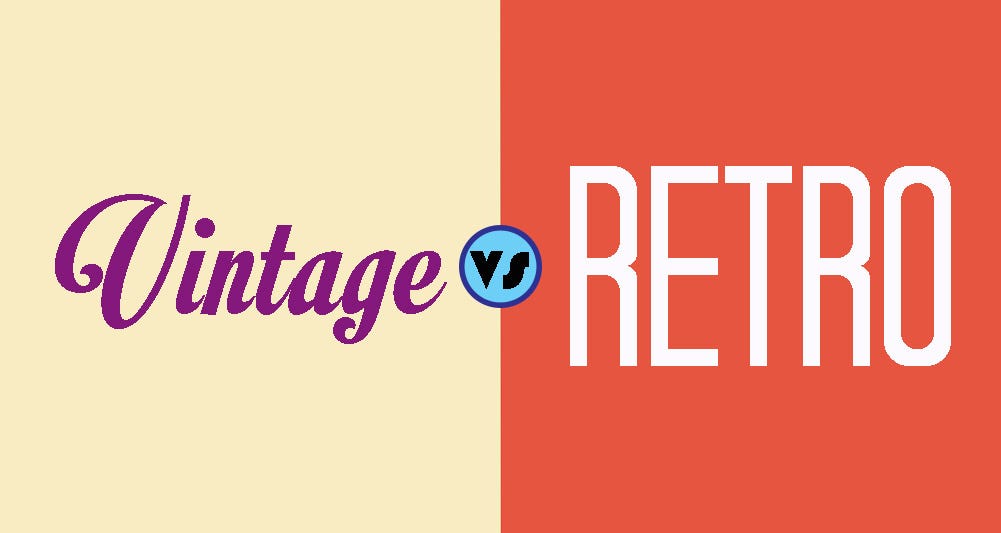Retro vs. Vintage in Illustration: Use These Terms Correctly
The words “retro” and “vintage” are too generic and ambiguous. When someone says, “What a beautiful retro illustration…” my response is: Excuse me? Which time period are you referring to? Do you mean the rubber hose era of Mickey Mouse, the style of Dexter’s Laboratory, or a more realistic touch like the early Superman comics? It’s incoherent!
Here it is an explanation about Vintage vs Retro vs Antique here
Why context matters for ”Retro” and ”Vintage”
You see, when these words are used without context, they can refer to anything. “Retro” or “vintage” could describe an Art Nouveau poster, a 1950s chair, or a song from the Prohibition era, among other things. I had a small disagreement with one of my mentors when I complimented them by saying they “illustrate vintage.” At first, I didn’t understand the issue, but now it all makes sense. These terms only work correctly when used within a specific time frame or style.
Unfortunately, in today’s content-driven world, words like “retro” are thrown around to label anything that appears slightly aged, nostalgic, or handmade. But as creators and appreciators of visual art, we have a responsibility to describe work more accurately. Words carry historical weight. When used without precision, they blur the uniqueness of the art they intend to celebrate.
So, what’s the right term?
The style I draw in is called “mid-century,” which encompasses the era from the 1940s with the advent of television to the 1970s. Mid-century style is reflected in architecture, furniture, and music, and it embodies the American dream of post-war modernity. When people refer to my illustrations as simply “retro” or “vintage,” it lacks the specificity that mid-century design deserves.
To be clear: “retro” usually refers to something that is new but intentionally designed to resemble an older style, while “vintage” often implies that the item or artwork is actually from that past era. So when you’re describing an illustration, it’s helpful to ask: Is this mimicking the past, or is it from the past?

Real-world example: Fred Flintstone
Let’s use an example to show what counts as correct and incorrect when describing a classic cartoon in stylistic terms:
✅ Correct: “The drawing of Fred Flintstone has a vintage style that perfectly captures the aesthetic of 1960s animation.”
❌ Incorrect: “The drawing of Fred Flintstone is vintage, right?” (Lacks context about what specific aspect is considered vintage)
✅ Correct: “I love how the drawing of Fred Flintstone incorporates vintage elements in its design, like the clean lines and vibrant colors.”
❌ Incorrect: “The drawing of Fred Flintstone is so vintage.” (Fails to clarify what design elements are meant)
✅ Correct: “The vintage aesthetic of the drawing of Fred Flintstone reflects the fashion and style of the 1960s.”
❌ Incorrect: “Isn’t it great that the drawing of Fred Flintstone is vintage?” (Vague and unspecific)
So, what should you say instead?
When in doubt, get specific. Instead of “retro,” try describing the exact style: “mid-century modern,” “rubber hose animation,” “’90s digital art,” or even “early Hanna-Barbera style.” These phrases provide not just clarity but also appreciation for the craft behind the design.
This doesn’t mean you can’t use the words retro or vintage at all. Just use them with intention. Add time period references, visual characteristics, or movement names. This gives your description much more depth, and gives the artist (or artwork) the respect it deserves.

Conclusion
This article is short but clarifies how to use “retro” and “vintage” in illustration. Context is everything. If you’re referencing a particular design movement or era, name it. Otherwise, the compliment might miss the mark.
Thank you for reading, and feel free to share this with someone who might casually throw around the word “retro”! 🎯
Now, in the meantime, follow my portfolio here!
Don’t forget to follow me on social media 😉

Leave a Reply